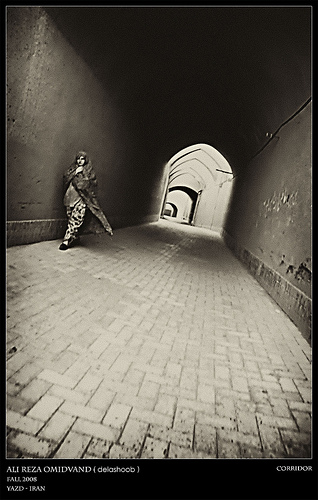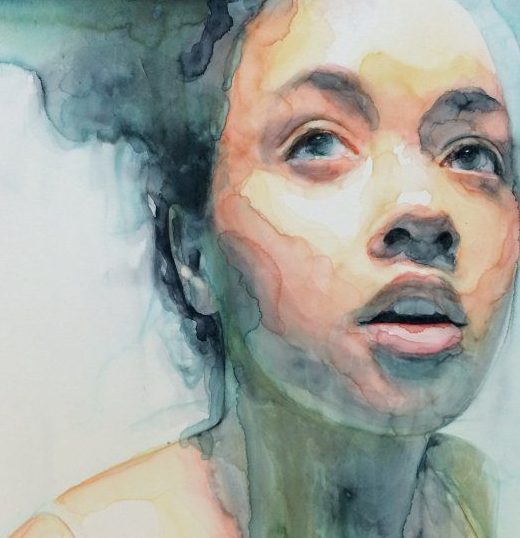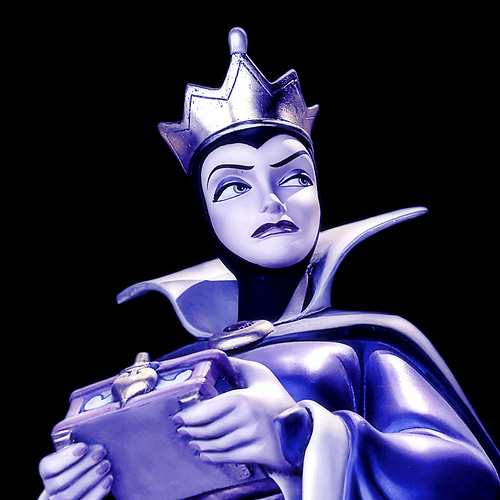Premise Determines How Many Characters You Should Have in Your Novel
When I think about the many novels I’ve written, I realize I don’t always start with a plot idea. Sometimes a topic or theme intrigues me, or I’ll have an image of a character in the throes of a moral dilemma. I remember reading about how C. S. Lewis came up with his Narnia series. He had a picture in his mind of a faun carrying a parcel and an umbrella through a snowy wood. From there, the The Lion, The Witch, and the Wardrobe sprang into existence.
The novel I’m currently writing, a supernatural thriller called Lightning Man, also was sparked by a picture in my head. I saw a man at the top of a mountain, his arms outstretched in a messianic surrender to the heavens, willing lightning to strike him for the tenth time, intending to stop a terrorist by sacrificing his life as he grips the bad guy. From there I had to ask a lot of questions to find my story, and I encourage you to do the same with the ideas that excite you.
I wove a complex plot around that character and climactic moment I saw in my head (it’s taken me a couple of years, but it’s all in place now). But it all started with a picture of a nebulous character.
 For my novel Someone to Blame, I started with the word blame. You could call it a theme or topic. I wanted to explore the ways people blame themselves and others and the damage and hurt blame causes. From that germ of an idea, a plot developed—a story about a family who’ve suffered the loss of two sons and moved to a new town hoping to start over, only to get drawn into a heavy drama that mires the town in blame and subsequent danger.
For my novel Someone to Blame, I started with the word blame. You could call it a theme or topic. I wanted to explore the ways people blame themselves and others and the damage and hurt blame causes. From that germ of an idea, a plot developed—a story about a family who’ve suffered the loss of two sons and moved to a new town hoping to start over, only to get drawn into a heavy drama that mires the town in blame and subsequent danger.
Though ideas for stories begin in different ways, all roads lead to one key question: Who is this story about, and what is that character’s journey?
And to formulate the answer, we need to brainstorm four key elements.
Whether I’m teaching about novel structure, plotting, laying out scenes, or crafting characters, I always swing back around to foundational story structure. The four basic pillars of novel construction are protagonist with a goal, conflict with high stakes, concept with a kicker, and theme with heart. These four elements need to meld holistically as you develop your story. They are equally important, and each informs the other. If you’re not familiar with these pillars, consider taking my mini course offered in my online school.
Your genre may inform some of the requisite characteristics of your cast of characters, but even within the bounds of genre you can still develop fresh, unique characters. Your readers deserve those elements of originality, so spend time on your characters and resist the default mode (stereotypes). And really, what’s more important is your premise.
Premise Matters Most
Why is that? Can’t a great character alone sustain reader interest in a story? No, it can’t. At some point in your creative process, you have to come up with something that happens to and with your character. Something compelling. Something that compels the reader to want to follow this character on a journey of sorts.
How does premise come into play here? Your premise lays out the situation your protagonist has to tackle. A premise proposes a situation that must be dealt with. A comet is heading to earth and it must be stopped. A ring of power has been discovered and it must be destroyed before an evil lord uses it to great harm. A woman is in love with a man who doesn’t notice her so she must find a way to get his attention.
If you’re writing a novel about a group of scientists that are trapped in an orbiting space station and have to find a way to survive for three years before rescue comes, you first think about the skills and expertise those characters need to have. Without those skills, those characters wouldn’t be there. And believability is crucial in a story, whether a real-life one or a fantasy.
I wish I didn’t have to say this, because isn’t it obvious? Yet, I see so many characters thrust into roles that they are wholly unqualified for. Characters cast as cops or doctors or investigators that have no smarts, no skills, no training. Characters who are presented as top litigators who can hardly utter an intelligent sentence.
While the real world does shock us with the level of incompetence and immaturity we see, for example, in our political realm, unless we are doing a spoof or sick comedy, it’s best to stick with the expected. It’s just more believable to have competent characters doing things that require expertise.
In the movie Taken, the father who tracks down his daughter’s kidnapper in France is a man perfectly suited for the task. But if Bryan Mills was a shy, fearful CPA instead of a former CIA operative with serious weapons and investigative chops, not to mention contacts in law enforcement in France, the entire premise would collapse. Our stories must be believable—which means our characters must be as well!
Ask questions of each of your characters. If you have a female captain of a space station, and she’s your main character in your suspenseful drama—the one who, in essence, saves the crew by her wits—she’s going to have some smarts.
It’s great to have some really cool characters, but that won’t get you very far.
At some point in your brainstorming, you will need to come up with a premise. Thinking up a terrific character, maybe even in an exciting situation, such as my lightning man at the top of the mountain, is just the start. It certainly isn’t enough to ensure you’ll have a great novel, movie, or play.
And you can’t really fill in your cast of characters until you have a strong concept based on a strong premise.
Your protagonist deals with the situation by pursuing a goal—the plot goal for the story. Unless you are writing an epic family saga or fictional biography, a novel (or play or movie) will cover a short period of time showing your hero going after that goal, which is resolved at the climax of your story (and after which the story quickly ends).
This is story structure in a nutshell, and if you aren’t well versed in it, I highly encourage you to make time to learn it before getting too deep into your writing. I recommend Michael Hauge’s best seller: Writing Screenplays That Sell. Yes, even if you’re writing a novel, this book is for you.
In Mrs. Doubtfire, Daniel Hillard is desperate to see his kids after his wife has kicked him out and taken custody of them. A struggling actor, the only thing he can think to do is create a character he can become to reach his goal—being hired as the kids’ nanny so he can fulfill his core need—to be with his children. Becoming Mrs. Doubtfire gets Daniel on track to his ultimate goal—get his children back.
Your concept with a kicker is the unique, intriguing story you come up with to show your protagonist pursuing that goal amid high stakes and conflict, with a strong theme or moral dilemma at its heart.
Whether you start with a character, a concept, a premise, a theme, or some other element that sparks your desire to write a story, you need to flesh out these four pillars to some extent before you can fully create your cast.
This is because you can’t build on a nonexistent foundation. Your cast of characters must emerge out of the premise and plot. If you think up a group of random characters you like, but you don’t have a clear purpose for them to be thrown together, you won’t have a cohesive story. If you don’t have strong conflict and high stakes, you’ll have a lot of happy people in happyland doing meaningless, boring things, and readers will drift away.
So take some time to hone that premise. Be sure you have a riveting one. Brainstorm the stakes and conflict so they’re sky high. It might help to use my 12 Key Pillars workbook, which has hundreds of brainstorming questions and checklists to help you flesh out your pillars.
When you’ve got these elements solidly structured, you’ll be ready to populate your story with just the right type and number of characters to do justice to it.
Remember: the cat in the movie Babe tells the naïve pig that if he doesn’t have a purpose, well … he’ll end up like poor Rosanna the duck, who turned up as the featured entree on the Christmas dinner menu. Animals on the farm that don’t have a purpose meet a terrible fate. So too, if your characters don’t serve a purpose … out they go!
Want to ensure you have just the right characters in just the right roles?
Take my new online video course! Enroll before May 1, 2020, using coupon code EARLYBIRD and get $50 off.
You get lifetime access and go at your own pace, so you don’t have to start taking the course right away. But you do have to sign up before May 1 to get the discount.
Here’s the description of the course and what you’ll learn:
Your Cast of Characters: How to Populate Your Story with Just the Right Characters
 Characters are the heart of every story. Without them, stories would be flat, boring, uninspiring. We read fiction to immerse ourselves in the lives of characters—their journeys and struggles, their hopes and failures. And when we go on these journeys, we long to be moved, even changed, by the characters we care about. If we’re lucky, we’ll gain some important insights about ourselves, our world, and those we share life with.
Characters are the heart of every story. Without them, stories would be flat, boring, uninspiring. We read fiction to immerse ourselves in the lives of characters—their journeys and struggles, their hopes and failures. And when we go on these journeys, we long to be moved, even changed, by the characters we care about. If we’re lucky, we’ll gain some important insights about ourselves, our world, and those we share life with.
As fiction writers, our task, first and foremost, is to tell a great story. The challenge is to populate that story with a cast of characters that is exactly what’s needed to tell that story in the best way possible, whether we’re writing a play, a movie, a short story, or a novel.
But there aren’t any hard-and-fast rules or a road map laying out exactly how many characters a story should have or what type of characters or the roles each one should play. Too many characters, and a story can get bogged down and muddle the plot. Too few, and the story feels superficial or incomplete.
So how does a writer decide on her cast of characters? Are there some guidelines, at least, to help in that decision?
Yes, there are. And, in this course, you will learn all you need to know to create your cast of characters!
Here’s some of what you’ll learn in this extensive course:
- What the basic types of characters are and what roles they play in a story
- How your plot and premise inform the characters you develop
- How to determine if a character is essential to your plot or just “filler”
- What kind of supportive characters does your specific story need and how you can determine that
- How to create characters that act as symbols
- What archetypes are and how you can utilize them to create fantastic characters
- How incidental characters can make or break your story
- Why understanding character motivation is paramount
These video modules feature numerous excerpts from novels, movie clips, and deep instruction. In addition, you are given assignments to help you develop a great cast of characters, which you can download and do over and over as needed.
BONUS!
In addition to the intensive instruction in these video modules, you’ll also have access to numerous video interviews with best-selling authors, who share their process in developing their cast of characters as well as give tips to authors on how to come up with great characters! These video interviews are not available anywhere else.
Don’t guess how many characters your story needs. Don’t just throw in random character types to fill out your novel or play or screenplay. This course will give you the guidance you need to make smart decisions about your cast of characters.











